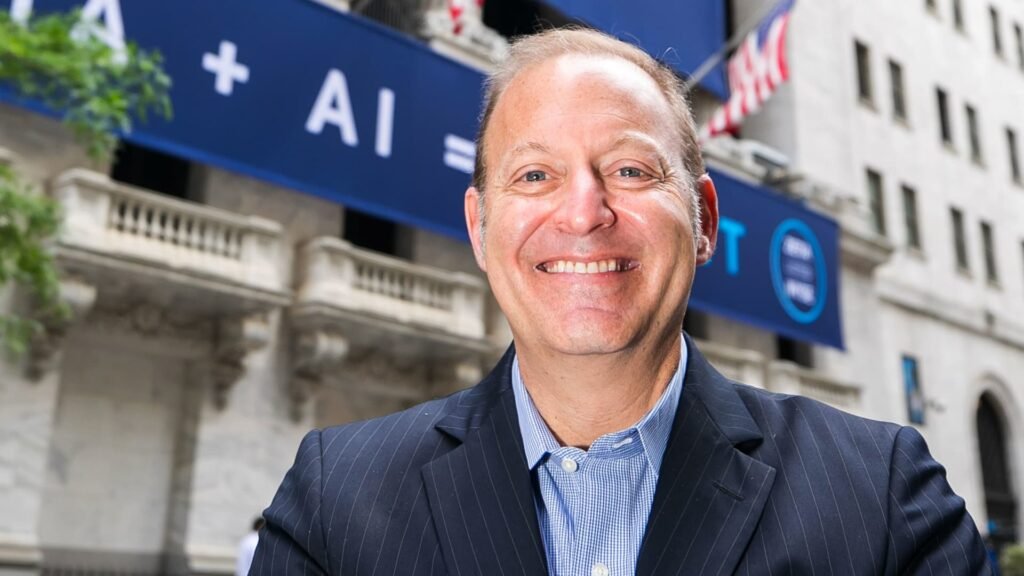Zeta Global Holdings CEO David A. Steinberg at the New York Stock Exchange.
Source: NYSE
Measuring the strength of the expanding US economy isn’t easy, so one company is turning to artificial intelligence to do the job.
The Zeta Economic Index, released on Monday, uses generative AI to analyze what its developers call “trillions of behavioral signals” of data focused primarily on consumer activity to assess growth both across broad health levels and a separate measure of stability.
The index essentially measures online and offline activity across eight categories, aiming to provide a comprehensive view that combines standard economic data points such as unemployment rate and retail sales with high-frequency information for the AI era.
“The algorithm looks at the traditional economic indicators that you normally look at, but our proprietary algorithm takes behavioral and transactional data from 240 million Americans that no one else has,” said David Steinberg, Zeta Global co-founder, chairman and CEO.
“So rather than looking at the data through the rearview mirror like everyone else, we’re trying to release the data in advance to give us a 30-day snapshot of where the economy is headed,” he added.


The eight vertical sectors used by the economic index include motor vehicle related activities, food and entertainment, financial services such as credit extension, health care, retail sales, technology and travel.
As a measure of stability, the index attempts to gauge consumers’ ability to cope with economic fluctuations.
Taken together, the goal is to provide a broader measure of gross domestic product or growth than similar indicators.
Both measures performed well in June, with an economy score of 66 and a stability index of 66.1, which correspond to “vigorous” and “stable” ratings of the economy’s health, respectively.
“This may be a more comprehensive way of really forecasting the economy because it doesn’t just take existing economic indicators like GDP, employment and a variety of reports on different vertical sales, but it layers on top of them,” Steinberg said.
“We really look at what consumers are actually spending their money on, what they are actually reading and researching,” he added. “Having all that information helps us make more accurate predictions.”



